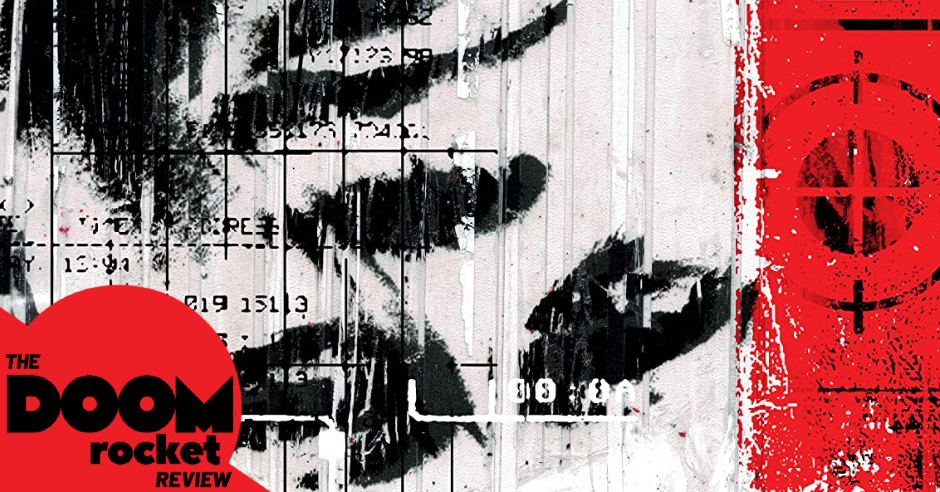THIS REVIEW OF ‘DEPARTMENT OF TRUTH’ #1 CONTAINS MINOR SPOILERS.

by Mickey Rivera. Men in Black was alright, but it’s kids stuff. The X-Files was entertaining, but mainstream television can only do so much. When I want to feel like I’m trapped in the acid pit that is the mind of a conspiracy theorist I like to get obscure: Tribulation 99. This experimental collage film from 1991 has it all: a raspy voice reciting the secret history of the world, a plot that fuses the actual conspiracy of CIA interference in Latin America with alien invasion, and on-screen action clipped and mixed from ancient b-grade sci-fi cinema, books, and nature documentaries. Part of the genius of Tribulation 99 is that, despite relying on found footage, the visuals match the plot as though they had always been meant to tell that story. It exemplifies a fact that conspiracy theorists use to their advantage: what you think you know is pieced together from the information you’ve been given. So who’s giving you the information, and can you trust them?
The Department of Truth attempts to bite off a piece of that bittersweet apple of knowledge, but I don’t think it knows what to do with the secrets it’s revealing. While the art comes in strong with its paranoid expressionism, the narrative feels like it’s lost in the dark. I blame it on the execution rather than the premise. Our protagonist, FBI agent Cole, is abducted by a couple of mysterious agents who want to interrogate him about what he saw in the backroom of a flat-earther convention… Sounds like a set up for a joke, maybe. But the fact that a conspiracy theory is preposterous in the minds of the unenlightened is exactly what gives it power.
Conspiracy theorists are fueled by a socially-conscious hypervigilance against authority, which makes their craft inherently subversive. Distrust of the government and the plutocrats that pull the government’s strings is generally a healthy thing. And attempting to shoot down a die-hard theorist only makes them stronger. They’re like living oobleck: a formless slime that resists when you slap it. That kind of persistence is normally enviable.
I’ve had a slow-burning lifelong demi-obsession with conspiracy theorists because they fill all the ontological vacuums in our society. They owe their obsession to the fact that first-hand experience is a rare and precious thing, and that any knowledge outside your lived experience is dependant on someone’s good word. Where a reasonable individual will make do with a chain of trust and some appeals to authority, those looking for the capital “t” Truth will die digging for hard evidence. As Department of Truth suggests, this search puts those seekers at risk for manipulation by bad-faith actors with agendas. There is no time better than the present moment to see that risk realized—Hello QAnon, hello PizzaGate, hello all ye lost in an endless search for a deeper meaning to the machinations of power.
So my trouble with this comic isn’t the premise but the way the narrative deals with it. While it hosts a couple characters who are interesting by virtue of their shared sense of genial bitchiness, the rest are shrouded in mystery to the point of incoherence. Department of Truth is often on the verge of describing something, but stops halfway up the hill everytime. Cole’s dialogue with the mysterious agents, when he describes the patrons of the flat-earth convention, reads like dry analysis. Maybe that helps paint Cole as a dull guy but it does nothing to hook a reader in. Later, when Cole is confronted by a pair of shady old suits who show him a new and disturbing truth about the flat-earth community, all the book musters to describe them is bad breath and lots of money—not much to go on. Though the art helps produce that visceral response we’re meant to feel about these two, it’s not enough.
We’ve got an intriguing set of characters and circumstances here, but the most they have to offer right now is a vague sense of unease and some one-liners. What I feel is missing is a more personal demonstration of the life and personalities of these flat-earthers and government spooks. Readers need to know a bit more than that they smiled “like they knew a secret truth about the world.” Don’t we all, when we’re feeling ourselves? There’s also the issue of a few low-energy clichés that pop up throughout the book. Have you heard the phrase “See how deep the rabbit hole goes” before? Well get ready to relive the magic.
The art by Martin Simmonds is mostly solid. The visual language of mid-20th century bureaucratic erasure plays heavily. Scratch marks, white-out, and ink-smudges interplay with harsh edges and an ever-present cloud of paint splatters. Department of Truth feels like it’s been salvaged from a manilla folder that’s been forgotten in a musty government basement, which is perfect for this kind of story. Unfortunately the vagueness bug hits the art too: a critical panel towards the end, meant to be a big reveal, falls flat due to illegibility.
The dangers and psychosis of conspiratorial thought are right there in the crosshairs of The Department of Truth, but I think it misses. (The bizarre twist at the end is off-beat enough to be intriguing.) The premise could speak volumes to the ways in which knowledge can be created and controlled by those in power to nefarious ends. The world we’re all living in seems more and more like a conspiracy theory come true, so it’s only fitting that Department of Truth should be right there to tighten our focus on it.
Image Comics / $3.99
Written by James Tynion IV.
Art by Martin Simmonds.
Letters by Aditya Bidikar.
Design by Dylan Todd.
6 out of 10
‘Department of Truth’ #1 is available now. Contact your LCS to score a copy of your own.
Check out this 3-page preview of ‘Department of Truth’ #1, courtesy of Image Comics!

















